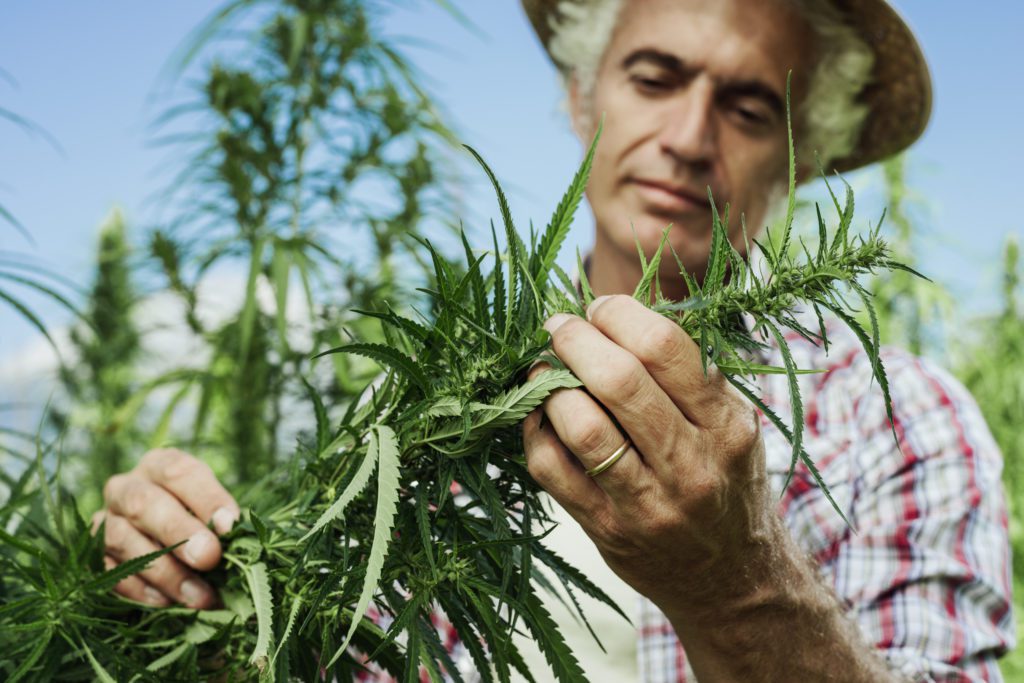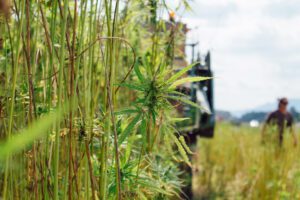
The Mary Miller Amendment will kill the hemp industry, including its industrial sector.
By Rod Kight, Jonathan Miller and Chris Fontes
When the Mary Miller Amendment (MMA) passed the U.S. House Agriculture Committee, I wrote an article about how it is specifically designed to kill the hemp cannabinoid industry. Unfortunately, and even though this industry generated $28 billion in revenue last year, there are groups that want it dead, including a small cartel of marijuana corporate conglomerates who seek to destroy the hemp industry so they can control the entire cannabis supply chain to the exclusion of small hemp businesses.
In addition to deploying millions of dollars into lobbying efforts to shut down the hemp industry, these conglomerates have launched a massive disinformation campaign about hemp products and child safety that is largely bereft of substantive factual support.
But that’s not all. In addition to killing the hemp cannabinoid industry, the MMA will also kill the industrial hemp industry. Aside from the marijuana cartel, there are others who do not care about the hemp cannabinoid industry but who do care about industrial hemp. These groups are fine with the MMA because, to their understanding, it does not impact “industrial” hemp. This view is not only incorrect, but it is a direct result of the disinformation campaign referenced above. To be clear, the MMA will kill all hemp, including “industrial hemp.” This is because the MMA does the following:
- It changes the definition of “hemp” so that total THC must not exceed 0.3 percent. Some people have argued that the MMA merely codifies current U.S. Department of Agriculture (USDA) policy in measuring THC in the field. That’s not true because the MMA goes well beyond measuring THC in the field to making a sweeping change to the current definition of “hemp” in the Farm Bill. Contrary to popular belief, THCa, the nonpsychoactive precursor to THC, is not mentioned in the Farm Bill’s definition of hemp. Importantly, it is not part of the legal “metric” for determining whether cannabis material is lawful “hemp.” In fact, the opposite is true. The current definition of hemp specifically includes its “acids.” (THCa is one of many acids the plant produces. The “a” in THCA stands for “acid.”) The only statutory reference to THCa in the Farm Bill is via an inference.
The Farm Bill directs the USDA to use a “post-decarboxylation” method to test hemp in the field. This means that a hemp crop cannot be harvested unless it passes a total THC test, which accounts for the THCa concentration. In other words, even though THCa is never mentioned in the Farm Bill, it is implied by virtue of the required post-decarboxylation test that must take place before a hemp crop can be harvested. Once this test is passed, the hemp crop may be harvested. Thereafter, the concentration of THCa is irrelevant and, under the Farm Bill, the sole metric to distinguish between lawful hemp and unlawful marijuana is the concentration of delta-9 THC, not THCa. This is a critical point since most harvested hemp crops would fail if the THCa concentration was included as the compliance metric in defining harvested hemp, something that the MMA would require. Notably, grain crops require late flowering and will have no legal pathway if the MMA becomes law and “total THC,” rather than delta-9 THC, becomes the new legal compliance standard.
- It excludes viable seeds from the definition of “hemp” when they come from a plant with total THC that exceeds 0.3 percent, even though cannabis seeds contain almost no THC, and the U.S. Drug Enforcement Administration itself considers them to be lawful. Notably, all grains, including hemp seeds, are “viable” before they are rendered nonviable.

As discussed above, the MMA’s requirement that all post-harvest material pass a post-decarboxylation test would deem all hemp seeds from such plants to be Schedule 1 controlled substances. Given that as much as 88 percent of harvested hemp plants fail a total THC test and are illegal marijuana under the MMA, the grain market will collapse if the MMA is enacted into law. I should note that this specific provision has nothing to do with health, safety or anything else along those lines. Rather, it is solely about consolidating power in the hands of a few corporate marijuana conglomerates who perceive all competition, even from hobbyist home growers, as a threat to their bottom lines.
- It excludes “quantifiable amounts” of THC, including THCa, from the definition of “hemp.” Hemp is cannabis. It is not some other species of plant. One of the most notable and fundamental characteristics of the cannabis plant is that it expresses THC. By eliminating all THC, the MMA would render all hemp, including industrial hemp, a Schedule 1 controlled substance since ALL hemp plants express THC in quantifiable amounts.
The founder of one of the top cannabis laboratories in the country informed me that his lab can detect THC at levels down to picograms per milliliter (0.0001). This roughly equates to a drop of THC in an Olympic-sized pool. Moreover, even if an industrial hemp plant could be grown with no quantifiable amounts of THC, the fiber market is not currently viable enough on its own to support an industry. It does not produce sufficient revenue to support testing labs, regulators’ budgets or the bottom lines of most businesses. Given time, this will change, but only if the entire hemp industry is allowed to survive and thrive.

The MMA pulls the rug out from underneath the multibillion-dollar hemp industry that Congress created in 2018. This includes the grain and fiber sectors. Even though the MMA is promoted as an effort to close the so-called hemp loophole, what it will really do is kill the entire legal hemp industry while giving away billions of dollars to the illegal marijuana industry. If Congress truly believed that hemp products constitute a public health crisis, then it would have enacted legislation requiring the U.S. Food and Drug Administration or another federal agency to oversee it many years ago. The fact that it hasn’t done this belies the shrill cries of concern of the marijuana cartel’s disinformation campaign that mask its true intent to destroy its hemp competitor.
Moreover, there are better ways to address safety than by killing the hemp industry, including by promulgating regulations that prohibit access by minors, mandating quality control in production and standardizing labeling so adults can make educated decisions about what products they choose to purchase. These three regulatory zones, what I call the “Three Pillars,” have been addressed in hemp industry-sponsored bills in state legislatures throughout the country, many of which have been defeated due to intense lobbying against them by the marijuana industry.
Finally, for proponents of “industrial” uses for hemp who also think that it is OK to give the illegal corporate marijuana cartel a giveaway while destroying thousands of legal small businesses, be aware that MMA will kill the entire hemp industry, including the industrial sector that they purport to support.
Rod Kight is an attorney who represents businesses in the hemp industry.Jonathan Miller is general counsel to the U.S. Hemp Roundtable. Chris Fontes is president of the U.S. Hemp Authority.

